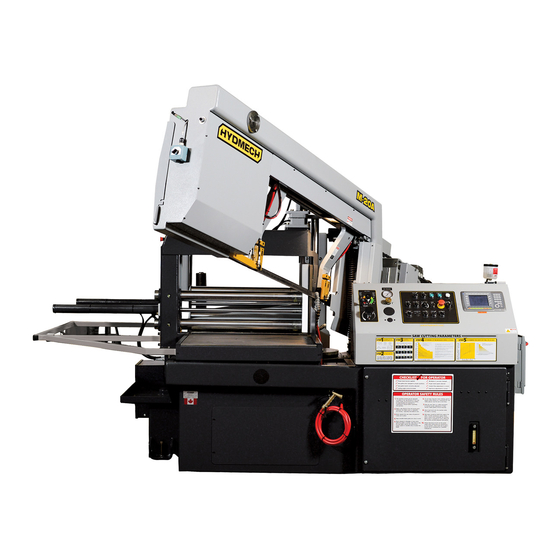
Table of Contents
Advertisement
M-16A & M-20A PLC 500 E600 & PLC 100 E200
2003 Revision C
393060 December 2003
Effective T0503338
THANK YOU,
On behalf of everyone at HYD . MECH, I would like to thank and congratulate you on your decision to purchase a
HYD . MECH band saw.
Your new machine is now ready to play a key role in increasing the efficiency of your operation, helping you to reduce cut-
ting costs while boosting quality and productivity.
To ensure you are maximizing the power and versatility of your new HYD . MECH band saw, please take the time to famil-
iarize yourself and your employees with the correct operation and maintenance procedures as outlined in this manual.
We sincerely appreciate the confidence you have demonstrated in purchasing our product and look forward to building a
long and mutually beneficial relationship.
Thank-you.
HYD . MECH GROUP LIMITED
P.O. BOX 1030, 1079 Parkinson Road
Woodstock, Ontario Canada, N4S 8A4
Phone: (519) 539-6341
Service 1-877-237-0914
Sales 1-877-276-SAWS(7297)
Fax (519) 539-5126
e-mail, info@hydmech.com
01
Advertisement
Table of Contents
Troubleshooting















Need help?
Do you have a question about the M-16A PLC 500 E600 and is the answer not in the manual?
Questions and answers
WHAT IS THE PART NUMBER FOR CARBIDE GUIDES FOR THE M-16A BAND SAW